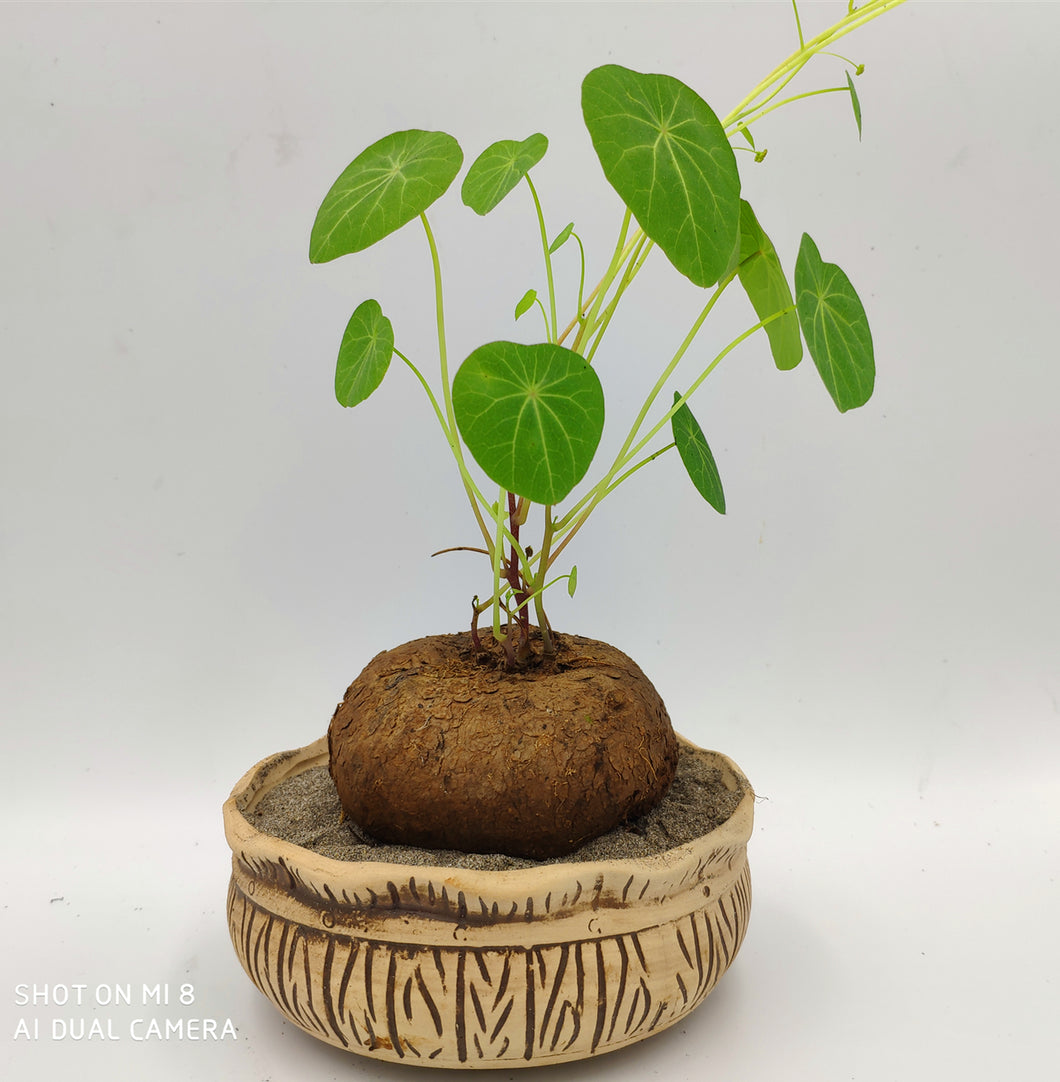The Stephania Erecta, a herbaceous deciduous woody vine, is entirely hairless and features large flattened spherical tuberous roots that are dark grayish-brown. Its tender branch tips are fleshy and purple-red with a white frost. The leaves are broadly rounded, sometimes nearly circular, and are arranged in clusters of several to a dozen small umbel-like inflorescences, bearing small purple flowers. The fruits are red and inversely egg-shaped.
Plants of this genus are rich in alkaloids, with several varieties having medicinal properties. The leaves measure 3-5 centimeters in length and 5-6.5 centimeters in width, with a slightly powdery white underside and three or more palmate veins. Leaf stalks are 4-6 centimeters long and are firmly attached to the leaf base about 1-2 centimeters from the stem. The inflorescence stalks are 1-4 centimeters long, bearing several to a dozen small umbel-like inflorescences, each with 2-3 flowers. The red fruits are inversely egg-shaped with 16-20 small transverse ridges on both sides of the dorsal surface.
The tuberous roots contain a large amount of saponin and resveratrol, which possess properties such as heat-clearing, detoxifying, sedative, and analgesic effects.
The Stephania Erecta is robust in nature and requires minimal management. It thrives in warm, humid environments with ample gentle sunlight, tolerating shade, drought, and waterlogging but avoiding intense sunlight exposure. During the growth period, potted plants should be placed in bright, indirect sunlight. Excessive light can cause plants to become weak with small, yellowing leaves. As the vine grows to a certain length, provide support such as wire to allow it to climb. Keep the soil moist, as occasional overwatering will not affect growth, but avoid prolonged waterlogging to prevent root rot.
Due to the storage of nutrients and water in its tuberous roots, occasional forgetfulness in watering will not harm the plant. However, prolonged drought can cause the stems to wither, leaves to turn yellow, and eventually fall off. In hot and dry summers, spraying water on the plant and its surroundings frequently will increase humidity and prevent the edges of the leaves from drying out.
During the growing season, apply diluted organic liquid fertilizer or compound fertilizer every 20 days to promote lush foliage.
When cultivating Stephania Erectas, it is crucial not to plant them directly in the soil or bury their stems, as they naturally grow in rock crevices without their stems touching the ground. Ensure that the shoot tips remain moist and can absorb ground moisture, allowing the roots to gradually grow into the soil. The correct planting method is to place the stems low in the soil, approximately 40 centimeters high, with a layer of stones in the middle and the Stephania Erecta placed on top.
Propagation of Stephania Erectas is generally done by sowing seeds, typically in autumn.
The stems of Stephania Erectas are reddish-brown, slender, and flexible. If left unpruned, they can continuously spread and form various shapes. The leaves, thin as paper and round like lotus leaves, hang delicately on the soft stems, making them extremely ornamental.
Nutrient-rich large tuberous roots will flower around May. At this time, flower stalks several centimeters long will emerge between the stems, bearing small umbel-like inflorescences at their tips. The small, lightweight flowers are adorable and quite rare.
In the cool autumn days, the leaves of Stephania Erectas may turn yellow and fall off, indicating that they are entering a dormant state. During this time, simply place them in a warm, ventilated area and refrain from watering until they sprout again. Come spring, they will regain vitality, and because they have aged another year, their leaves will be larger and more abundant than before.
